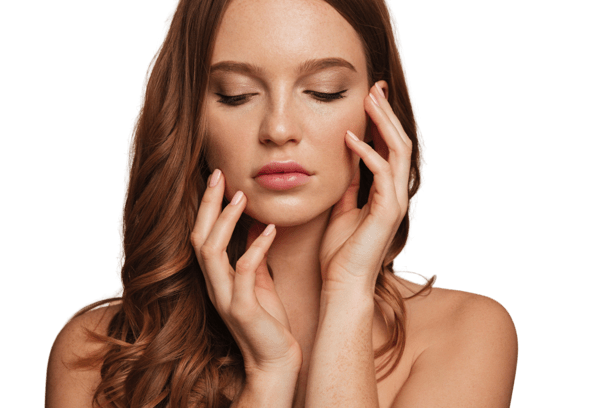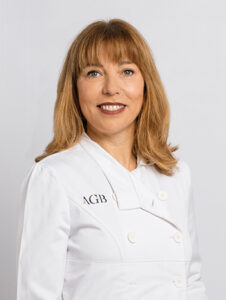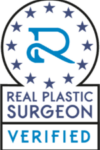Do you want to improve the appearance of your face?

Platelets release growth factors that stimulate cell regeneration, fundamentally increase the formation of new blood vessels and produce new tissues. In other words, they activate the organism in the region they are released, helping to rebuild damaged tissue, a restorative effect that is used to rejuvenate the skin.
One of the growth factors, called “epidermal growth factor”, was the first to be isolated: it stimulates angiogenesis and increases skin thickness, restoring its elasticity and firmness. This factor increases vascularisation in the area where it is applied. By doing this, it reduces the effects of cell oxidation on the skin and helps to erase wrinkles. The experts are continually surprised by the magnificent results obtained with its applications: it accelerates burn wound healing, treats keloid scarring, acne and stretch marks, improves the results of all types of treatments (including surgical), and enables the consolidation of skin grafts, as well as its post-peeling application or incorporation into a cosmetics base.
It is a natural, physiological treatment that uses our body’s own proteins, selected and concentrated, to repair the damage produced by the passing of time or by sun damage. As this is a product produced from the patient themselves there is no risk of allergy or intolerance.
It is an outpatient treatment that can be given in the consulting room. The area to be treated is first cleaned and prepared, and then an anaesthetic cream is applied. The patient’s blood is taken, spun down in a centrifuge and activated so that the patient’s own platelet-rich plasma can be obtained. Once the PRP has been prepared it is applied to skin, using a procedure known as mesotherapy, by microinjections with a very fine needle.
The number of sessions required will depend on the state of the individual patient’s skin. Usually this will be 3 sessions, once a month. After a year the treatment will need to be maintained; this will be done in one session every 6 or 12 months. The growth factors have to act by stimulating the tissue, therefore there are no instantaneous results. The effects appear gradually and continue to increase as time goes by. The maximum effect is obtained 20/30 days after treatment.
The targeted dosage of high concentration in growth factors that is done through the injections of prp in the face are the ideal treatment to improve the skin’s own rejuvenation capacity in this area. This technique stimulates the natural process of healing and repairing facial tissues and replaces skin cells with new ones. Rejuvenating the face, neck and décolleté with a platelet-rich plasma treatment allows you to erase signs of skin aging such as expression lines, wrinkles and folds.
In the same way, the treatment with PRP helps to obviously improve the skin of the hands, one of the most affected by loss of collagen, elastin and affected by signs of aging such as sagging, blemishes, marks , etc. Since the enriched plasma favors the production of collagen and elastin, it would be possible to recover the smoothness and elasticity of the skin of the hands. In addition, it is possible to perform a combination with other methods.
Enriched plasma has a high concentration of platelets that massively release growth factors that stimulate cell regeneration. This peculiarity makes a PRP treatment ideal for treating keloid, acne, burn scars and those due to surgery. In combination with other ablative techniques such as lasers, fillers such as fat grafting (lipofilling), PRP achieves excellent results. It is also the solution for the elimination of scars in other cosmetic and restorative surgery treatments.
PRP has been effectively treated on mucosa, especially in the vulvar and genital areas. Lichen causes atrophy of the skin, with discomfort such as itching, redness and pain. It is usually treated with corticosteroids, which causes further atrophy of the skin. It even goes so far as to alter the normal anatomy of the area severely. PRP, alone or in combination with lipofilling, can regenerate tissue, significantly reducing symptoms and improving the patient’s quality of life.
Other possible PRP treatments
On the one hand, the PRP used as a treatment on the scalp, can also help stimulate the growth of stronger, shiny and healthy hair. On the other hand, platelet rich plasma is used in other regenerative procedures of joint and tendon injuries. Its anti-inflammatory effect reduces or eliminates pain in one or two sessions.
EXCELENTETrustindex verifica que la fuente original de la reseña sea Google. Maravillosa experiencia con la Doctora Salvador!!!Trustindex verifica que la fuente original de la reseña sea Google. Estic encantada! Son els millors!Trustindex verifica que la fuente original de la reseña sea Google. Muy profesionales. El trato es atento y cercano. Los resultados óptimos. He quedado muy satisfecho, los recomiendo totalmente.Trustindex verifica que la fuente original de la reseña sea Google. Es la mejor clínica. Yo fue operado por el Dr. Benito. Durante mucho tiempo elegí una clínica y un médico, dudé. Pero tuve mucha suerte, ¡caí en manos de oro! Estoy muy contenta con el resultado inmejorable. El doctor es un especialista muy atento y elegante. Todo el personal de la clínica es muy agradable. ????????✨????Trustindex verifica que la fuente original de la reseña sea Google. Muy buena clínica, la doctora Salvador explica todo de manera que sabes que estas en buenas manos.Trustindex verifica que la fuente original de la reseña sea Google. Espectacular resultado gracias al dr.benito y a su equipo????Trustindex verifica que la fuente original de la reseña sea Google. Hace más de 15 años que confío en el doctor Jesús Benito. Un gran cirujano y una persona encantadora. Gracias por todos los cuidados !!!!Trustindex verifica que la fuente original de la reseña sea Google. Muy agradecido al Dr Benito por la confianza que se gana y que te ayuda a tomar decisiones. Muy satisfecho con su profesionalidad y los resultados. Y muy contento con su equipo por lo cómodo y fácil que te hacen todo.
She started in the field of Aesthetic Medicine and Surgery in 1999, creating the Aesthetic Medicine group of Antiaging Group Barcelona in 2004, and responsible for the Laser area since 2006.
She is currently professor of the Master of Aesthetic and Wellness Medicine at IFMiL (Institut de Formació Mèdica i Lideratge), with the collaboration of the University of Barcelona and the COMB (Colegio Oficial de Médicos de Barcelona).
She participates in different lines of research and scientific publications.

After a facial PRP treatment, the face can be left looking younger, fresher and brighter, as the technique uses the patient’s own plasma to stimulate the production of collagen and elastin in the skin.
Generally, the side effects of facial PRP treatment are minimal and temporary. Some patients may experience some swelling, redness or tenderness in the treated area, but these effects usually disappear within a couple of days.
The duration of time for the effect of facial PRP treatment can vary from patient to patient, but generally, results can last from six months to one year. It is important to note that multiple sessions may be required to achieve the desired results.
The results of facial PRP treatment are usually seen as early as two weeks after treatment, although the skin regeneration process may continue for several months.
Both treatments have different objectives and are effective in different areas of the face. Botox is mainly used to reduce dynamic expression lines caused by muscle contraction. On the other hand, platelet-rich plasma is used to rejuvenate the skin and improve its texture, reduce dark spots and stimulate collagen production. Therefore, the choice between Botox and platelet-rich plasma will depend on the area of treatment and the desired result to be achieved.
Hyaluronic acid and platelet-rich plasma are different treatments and both can be effective in improving the appearance of the skin. Hyaluronic acid is used to improve facial volume and smooth wrinkles. Platelet-rich plasma, on the other hand, is used to improve skin texture, reduce dark spots and stimulate collagen production. The choice between hyaluronic acid and platelet-rich plasma will depend on the treatment area and the desired outcome.
This treatment is called platelet-rich plasma (PRP) because it uses the platelet-rich portion of the blood to improve the appearance of the skin.
Medical Quality







Follow us